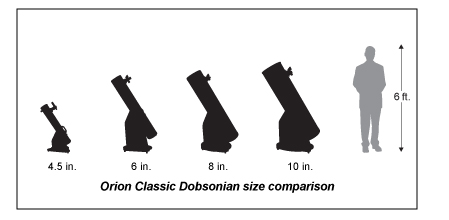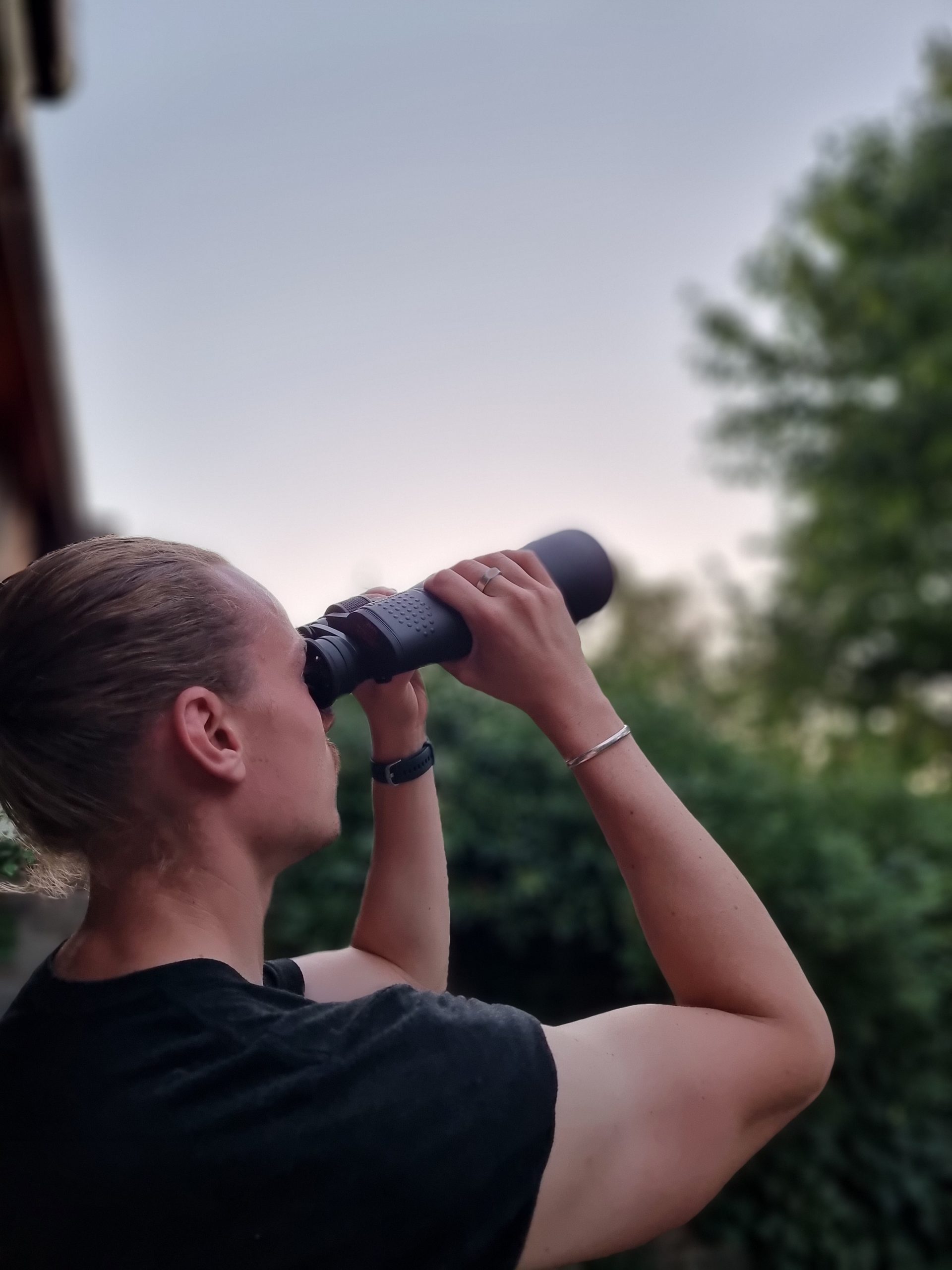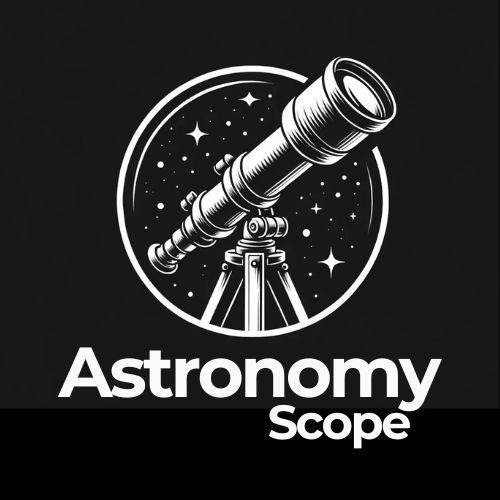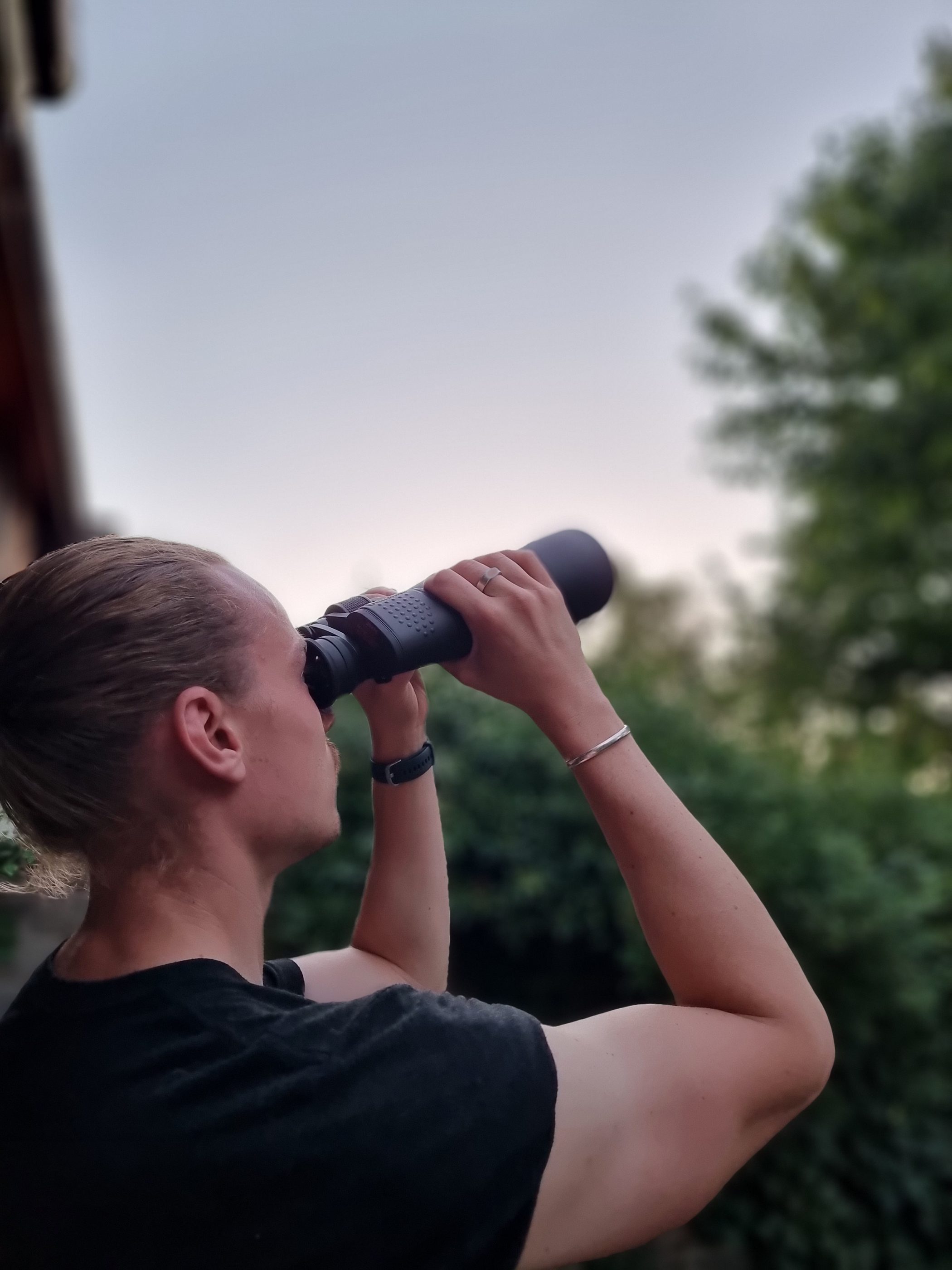Looking at the Orion SkyQuest XT6 and XT8. Not sure what is best for you? Well, you’ve come to the right place. Today, I’ll be walking you through the key similarities and differences between both variants, enabling you to select the one that suits your own needs, preferences, and budget.
So, what is better, the Orion SkyQuest XT6 vs XT8? Most astronomers agree that the XT8 is better in most circumstances than the XT6. The XT8 is optically superior to the XT6 variant, collecting 78% more light and utilizing enhanced-reflectivity mirror coatings. So as well as being able to observe the Moon and planets of our solar system you get a dramatic increase in the ability to observe DSO’s (Deep Sky Objects).
Both the XT6 and XT8 are easy to use, portable, point and view Dobsonian Telescopes that provide a lot of power for their respective prices.
Being built around parabolic mirrors ensures excellent light-gathering, and the stable base included on both variants provides vibration-free images even when viewing at high power.
Nevertheless, it is the XT8 that comes out on top.
It works far better under dark or even reasonably dark skies and you get a range of extra additional accessories included too.
However, it isn’t without cost – it is more expensive.
And here is one more consideration.
There are two variations of each XT model:
- XT6 Classic,
- XT6 Plus
- XT8 Classic
- XT8 Plus
Now the plusses are again an upgrade still. Again, they are more expensive than their classic alternatives.
Still, if you have the budget, then the XT8 Plus is going to be your ultimate, best buy.
If you are low on funds, the XT6 plus, is your next best bet:
XT Classic Recommendations:
XT Plus Recommendations:
Choosing Between The Orion SkyQuest XT6 and XT8
The Orion SkyQuest XT6 and XT8 differentiate in one main way – the XT8 has an 8″ (203mm) diameter parabolic primary mirror compared to a 6″ (15mm) diameter parabolic primary mirror, meaning they provide different light-gathering abilities.
With any optical instrument, whether it is a telescope or a pair of binoculars, this is the one major thing that dictates its overall power and what you will ultimately be able to see.
Regarding the optics, due to the differences in the focal ratio of both the XT6 and XT8, they have the same focal length. (5.9 * 8 inches ~= 47 inches, 8 * 6 inches ~= 48 inches).
So why do this matter?
It’s the focal length that dictates the field of view.
So using the same eyepiece, both telescopes will provide the same magnification and field of view.
It is that images appear brighter in XT8, and also sharper at high magnification.
When it comes to picking which one is going to be best for you, making a list is going to be the way to go.
Here’s a list of some of the things you should ponder about:
- What do you want to observe; is it primarily planets or DSOs (or both)
- What size telescope do you want? What size can you manage?
- What is your budget?
- Do you want a long-term investment or will you be looking to upgrade in the future?
- Do you have a telescope already? If so what is its current specification?
Asking yourself these questions is the first step into deciding what is really going to be best for you, as well as any family and friends who will be using your new telescope.
The XT8 is slightly more expensive, but it does come with better optics and components so it is more of an investment.
It is also slightly larger.
You can see the differences between the various SkyQuest models below:

Beyond just their relative size, consider that the XT8 is slightly heavier in weight, by around 7 lbs.
This may or may not be an issue depending on where you want to use it and when.
Outside of just portability, the extra weight will not be an issue as they are both stationed on a stable low-profile Alt-Azimuth platform.
- You have a limited budget,
- You are upgrading from binoculars, or opting for your first telescope,
- Weight and size matters to you; you want more portability
- You have the money to spend,
- Want a long term investment,
- Looking to discover more DSO’s and objects the XT6 will not be able to show,
- Currently have a 4/6″ Aperture telescope and want more power,
Orion SkyQuest XT Classic vs XT Plus
Here’s where it gets a little more nuanced. There are actually four different models you are going to want to consider (XT6, XT6 Plus, XT8, XT8 Plus).
You’ll find that the plus models are again superior, they’re designed with better and performance boosting components and also come with more accessories.
So again, if you have the budget then the plus (of either model) will be the way to go.
Here’s the basic breakdown of each variant, to help you figure out which one is going to fit with you the best.
XT6 Classic vs XT6 Plus




XT8 Classic vs XT8 Plus




Let’s now look at each model’s benefits and downsides:
SkyQuest XT6 Classic
The SkyQuest XT6 classic is the entry level telescope out of the four compared here.
Pros Of The SkyQuest XT6 Classic
✔️ Most Affordable and Budget-Friendly option; one of the best options for beginners new to Astronomy
✔️ Brilliant for observing the Moon and Planets. The brightest planets including Jupiter, Saturn, and Mars show an impressive amount of detail. Also provides an adequate light grasp for basic deep-sky observations of Nebulas, Galaxies, and Star Clusters.
✔️ Solid and stable Dobsonian base gives you vibration-free images even when you are observing at high power.
✔️ Collects 80% more light than your general 4.5″ Reflector telescope.
✔️ Primary mirror is center-marked which makes any collimation adjustments easy to do yourself. A handy quick-collimation cap is also provided.
✔️ CorrecTension springs balance the optical tube which makes tracking smooth and more precise.
Cons Of The SkyQuest XT6 Classic
❌Plastic components like the navigation and focuser knobs
❌ Components, like the Navigation and Focuser knobs, are made of plastic,
❌ Only 1 Eyepiece Included (limited extra accessories).
❌ The Red-dot Finder is inferior to the one you get included in the Plus variant(s).
SkyQuest XT6 Plus
Moving onto the SkyQuest XT6 Plus, this telescope is in many ways an upgrade to the classic model, but as you can see from the specification table above, it has the same Aperture, Focal Ratio, Focal Length, Magnification, etc.
Pros Of The SkyQuest XT6 Plus
✔️ Most Affordable and Budget Friendly 6″ Telescope.
✔️ An upgraded XT6 Classic Dobsonian that has performance-boosting design enhancements.
✔️ Additional Accessories included over the classic XT6 version: an extra eyepiece (25mm and 10mm Sirius Plossl included), Shorty 2x Barlow (boost magnification to 240x), Eyepiece Rack, EZ Finder II Reflex Sight and Collimation Cap.
✔️ Redesigned base with weight-saving cutouts. The trim band around the base enhances visibility in the dark,
✔️ Easy, tool-free collimation adjustment. Adjustable tension knobs on the altitude axis are used instead of tensioning springs found on the XT6 Classic model,
✔️ Twilight Blue metallic finish improves the appearance of the telescope,
✔️ Enhanced-reflectivity (94%) Aluminum Coatings for better light transmission compared to XT6 standard mirrors
✔️ Secondary mirror collimation setscrews have been replaced with big thumbscrews making it easier to collimate compared to the classic XT6.
Cons Of The SkyQuest XT6 Plus
❌Plastic components like the navigation and focuser knobs
❌ Still only provides 6″ Aperture; making the more distant DSO’s objects unobservable
SkyQuest XT8 Classic
Turning our attention to the XT8 models, this telescope will be the go-to for most people.
It will be a better long-term investment than a 6″, and you can observe a lot more considering a marginal increase in price.
Pros Of The SkyQuest XT8 Classic
✔️ Most Affordable and Budget-Friendly 8″ telescope; one of the best options for beginners new to Astronomy
✔️ Collects 78% more light than the XT6/XT6 Plus; providing you with considerably more power and reach for Deep Space Objects like dust lanes in nebulas, the cores of prominent globular star clusters, and to reveal some of the more subtle structures in faint galaxies.
✔️ Significant edge over the XT6/XT6 Plus under dark or even reasonably dark skies
✔️ Aluminium Focusers opposed to plastic Focusers included in the XT6
✔️ Finderscope adjustments are quick and easy, not as frustrating as a three-screw system on the XT6
✔️ Easy to collimate by hand using collimation cap provided,
✔️ 2″ to 1.25″ eyepiece adapter enables extra optional accessories,
Cons Of The SkyQuest XT8 Classic
❌ Scope is hard to move on your but this is part and parcel of a large, 8″ Dobsonian,
❌ Collimation cap included does not come with any instructions.
SkyQuest XT8 Plus
This is the most premium option tout of all of the SkyQuest’s discussed here.
It’s pretty unanimous from astronomers, that if you can afford it and have the budget this is the one to go for:
Pros Of The SkyQuest XT8 Plus
✔️ Collects 78% more light than the XT6/XT6 Plus; providing you with considerably more power and reach for Deep Space Objects like dust lanes in nebulas, the cores of prominent globular star clusters, and to reveal some of the more subtle structures in faint galaxies.
✔️ Upgraded XT8 Classic Dobsonian with several feature enhancements: redesigned Dobsonian base, adjustable altitude axis tension, and a 2″ dual-speed Crayford focuser,
✔️ weight-reducing cutouts make the XT8 PLUS more portable than its XT8 Classic counterpart.
✔️ Trim band around the base enhances visibility in the dark,
✔️ Easy, tool-free collimation adjustment. Adjustable tension knobs on the altitude axis are used instead of tensioning springs found on the XT8 Classic model. Also enables heavier accessories to be used without causing the optical tube to drop down during use.
✔️ Enhanced-reflectivity mirror coatings.
✔️ Great range of additional accessories including dual-speed Crayford focuser, 2x eyepieces, Shorty Barlow Lens, Safety Film Solar Filter, and the DeepMap 600 folding star chart.
Cons Of The SkyQuest XT8 Plus
❌Plastic components like the navigation and focuser knobs
❌ Most expensive SkyQuest XT6->XT8 option
Which SkyQuest Model Should You Choose?
The XT range is quite varied when it comes to power and design and this is reflected in the pricing.
Overall, the SkyQuest 8XT Plus is the top recommendation out of the four.
It provides the most power, is designed with the highest quality components, comes with a thorough set of additional accessories (dual-speed Crayford focuser, several eyepieces, Shorty Barlow Lens, Safety Film Solar Filter, Knurled Thumbscrews, White Base Trim, and the DeepMap 600 folding star chart) and with its metallic blue finish looks the best.
The 8XT Classic is a closer runner-up, thanks to its equally large aperture and extra accessories.
The 6XT Plus is the best budget option. Its redesign has enhanced the classic in many ways and has improved the classic XT6 which is a great Dobsonian Telescope – especially for the low price.
Ultimately, it is advised to get the best scope that you can comfortably afford.
If you decide on the classic 6XT you’ll still be getting yourself a great functioning telescope for a very respectable price.
The truth is, there is not a poor choice from the Orion SkyQuest range.
Before buying, be sure to consider any extras that you may need, that are likely to add additional expenses e.g. eyepieces.

Hey, my name is Jeremy. I’m a passionate and seasoned astronomer who loves nothing more than observing the night sky. I also love researching, learning, and writing all things Space and the Universe. I created Astronomy Scope to share my knowledge, experience, suggestions, and recommendations of what I have learned along the way while helping anyone to get into and maximize their enjoyment of the hobby.

